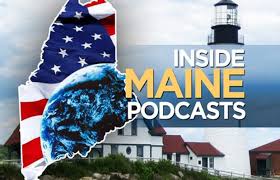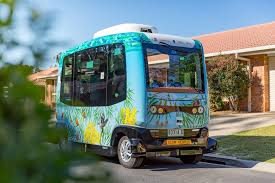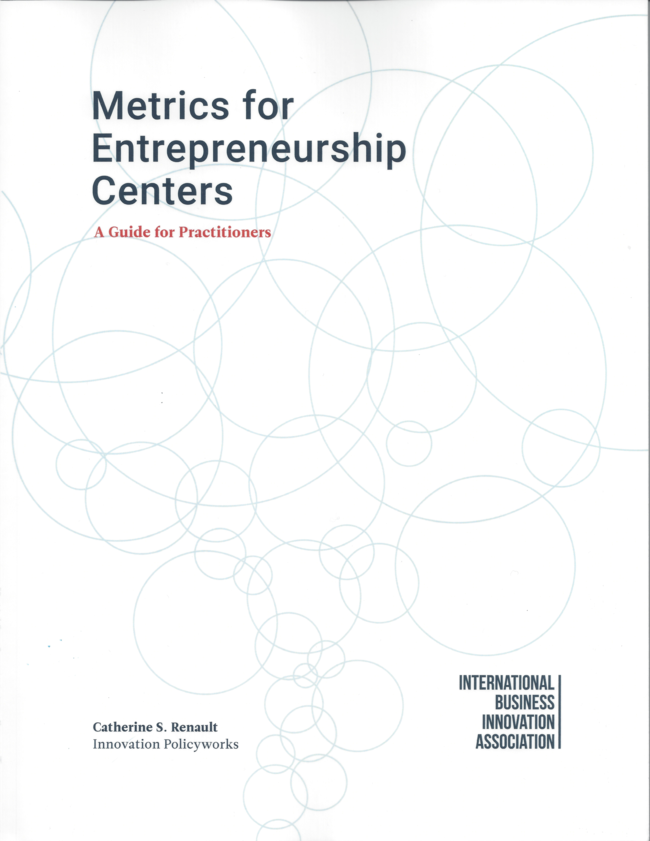|
|
|
Notes from Innovation Policyworks

Happy August! Hard to believe that we're halfway through summer. Here in Maine, we hold onto each day, as summer is so fleeting. But I did leave for a few days to present at the Development District Association of Appalachia's professional development seminar in Charleston, WV. This meeting of economic developers in Appalachia was organized by my friends and colleagues at the Center for Regional Economic Competitiveness (CREC), so I had to say yes.
Needless to say, Appalachia still encompasses many rural, distressed communities, even more distressed than many of the places I usually work. It was uplifting to see so many people dedicated to making things better in their communities, often against long odds. These are places where the decline of coal has hit home, where opioid addiction is rampant and where it's easy to lose hope.
I was especially interested in a presentation by Ann Barth of TechConnect WV,
a statewide economic development organization dedicated to the advancement of science, technology, and the innovation economy in West Virginia. She talked about the innovation and entrepreneurship initiatives in the state, one way that the organization is helping change the narrative in WV. One resource that inspired me was ChemCeption, the nation's only incubator-accelerator focused solely on commercializing chemistry-based technologies, including traditional and green chemistry, biotechnology, advanced materials and more. Located in the former Union Carbide campus in South Charleston, ChemCeption has made the necessary pivot from being about producing chemicals to chemistry as an enabling technology. This means that breweries, distillers and CBD producers are potentially part of the mix, not just traditional chemical companies.
Talk about turning lemons into lemonade...
Cathy
|
Urban, Small-batch Manufacturing
We recently worked on a project where the recommendation was to develop co-working space to benefit small manufacturers whose primary differentiator was design. It turns out that we were articulating a premise also being studied by the Urban Manufacturing Alliance.
They note that there has been a rise in "small-batch" manufacturing over the past decade. Small-batch manufacturers are combining design, art and production in innovative ways. These manufacturers are overwhelmingly small and young, but expect to grow. They tend to think of themselves as artists or artisans or makers, and need small, move-in ready spaces to grow in. Policies that would support these firms include:
1.
Help them connect to workforce, especially through nontraditional avenues such as faith-based institutions, culinary arts programs and refugee centers.
2.
Have sources of capital across a spectrum team up to offer financing as needed.
3.
Help connect these producers through a local brand.
4.
Create connections between designers and manufacturers, and work with retailers as partners.
These and other suggestions are contained in this
REPORT.
|
 Alaska's Public Universities in Deep Trouble
After Alaska Governor Michael Dunleavy's line item veto that eliminated 41 percent of the state university system's public funding, administrators at the University of Alaska are preparing to lay off as many as 2000 university employees, cut programs and potentially consolidate its campuses.
On July 22, the university's board of regents voted to declare a "financial exigency," akaacademic bankruptcy, making it easier to lay off tenured faculty. The cuts started on July 1, so the university is moving quickly to make changes to accommodate a shortfall of over $11 million a month.
A crash in the price of oil at the end of 2014 set off a budget shortfall for Alaska whose revenue is almost entirely dependent on an oil tax. State officials had tried to cut spending, but the governor used line item vetoes to cut more than $400 million from the state's budget. Another reason for the cuts is to maintain an annual payout to state residents from the oil tax, usually around $3000 for each resident.
Legislators didn't have enough votes to override the Governor's line-item veto, and the governor complicated the situation by calling the legislature back to meet in Wasilla, nearly 800 miles from the capital city of Juneau. See the news coverage
HERE.
|
Growth in the Creative Class is Not Where You Think
While it may seem like all college graduates are leaving rural areas of the country and moving to the big cities on the East and West Coasts, new data suggest that many Sun Belt and Rust Belt places are actually seeing significant growth in the "creative class," defined by Richard Florida as "knowledge workers in education, healthcare, law, arts, tech, science and business."
Working with economist Todd Gabe from the University of Maine, Florida tracked the growth of the creative class overall and across US metros from 2005-2017. The large metros with the fastest growth in the creative class over the period are Salt Lake City, Pittsburgh, Cincinnati and Grand Rapids. Florida says, "We may well be seeing the beginnings of a tipping point in the geography of talent as housing prices continue to rise in superstar cities, while metros in once talent-lagging parts of the country capitalize on the significant cost advantages and quality of life they have to offer." Read more
HERE.
|
Climate Change Incentives
ITIF economists note the difference between carbon taxes and energy technology incentives.
While both are critical pieces of a fight to impact climate change, they do very different things. The main job of carbon taxes is to cut pollution, with the goal of emitting less carbon into the air. Energy technology incentives, on the other hand, exist to foster innovation, speeding innovations like electric vehicles into widespread use. These innovations have the potential to reduce emissions as well. So while these policies have the same ultimate goal, they are very different. For a more detailed explanation, see
THIS.
|
A new piece from the Center for American Progress sheds new light into the diversity of rural economies and provides an important backdrop for discussions of programs and policies for rural economic development.
Their three big takeaways:
1.
Many rural economies are based on more than mining, agriculture or manufacturing. The service sector comprises the largest portion of employment in many places, with health care and food services dominant. Policies that support new industries, such as green technology, could be extremely effective.
2.
African Americans, Native Americans and Latinx individuals live in rural areas all across the country. One-fifth of growing rural areas owe their population growth entirely to immigrants. So policymakers must resist stereotypes about rural areas that minimize the struggles of marginalized communities such as these.
3.
There is a continuum between highly urban and completely urban. So, policies that try to neatly divide places into rural and metro will fall short in responding to the diversity of challenges and opportunities.
To read more, click
HERE.
|
|
What Mayors Can Do to Support Entrepreneurs
As dysfunction becomes endemic in federal and state governments, much of the real progress is being made at the local level. Last month at the Mayor's Conference for Entrepreneurship, 65 mayors committed to providing support and resources to those starting a business in their communities.
These mayors know that growing your own is a more resilient and inclusive approach to economic development that is focused on people rather than firms. Some examples of actions taken included: looking at regulations and procurement requirements to make it easier for new firms to sell into local government; helping new businesses with visa applications for immigrant entrepreneurs; and identifying entrepreneurial ambassadors to connect and support entrepreneurs. Learn more at the
National League of Cities, City Innovation Ecosystem program.
|
|
Hear Cathy on WGAN's Inside Maine with Marty Grohman
 I had the most fun talking with Marty Grohman, serial entrepreneur, legislator, House candidate and now Executive Director of E2Tech. He's just as engaging in person as he is on the radio! Listen HERE. I had the most fun talking with Marty Grohman, serial entrepreneur, legislator, House candidate and now Executive Director of E2Tech. He's just as engaging in person as he is on the radio! Listen HERE.
|
|
| |
|
"Only in darkness can you see the stars. "
Martin Luther King
|
|
Innovation of the Month: BusBot

Busbot is a driverless shuttle program at Marion Grove Retirement Village in New South Wales, Australia. Seniors summon the Busbot with their smart phones. The shuttle is dynamically routed to offer a seamless experience while avoiding unnecessary stops. The rides are free for the duration of a 22-week experiment to see if seniors will be willing to ride in autonomous vehicles.
Question for You: Can you convey and maximize the value of cutting-edge services for older users?
|
Bioscience Support Strategies That Work
The fifth biennial BIO Economic Development Best Practices Report highlighted some state programs that show a substantial level of support for the bioscience industry.
Click
HERE for the whole report.
- 21 states offer matching grants for Phase I or II Small Business Innovation Research (SBIR) grants to accelerate early stage company development.
- 27 states off tax credits to angel investors who invest in technology companies including the biosciences.
- 39 states offer sales tax exemptions on equipment for both research and development and manufacturing.
- 22 states invest state dollars in private venture capital firms that fund small and emerging bioscience companies.
- 38 state offer R&D tax credits for early stage research that is vital in moving research into commercialization.
|
|
New to Innovation, Entrepreneurship or Economic Development?
Want to learn more about what programs work and why?
Five Strategies for Economic Development that enhance innovation and entrepreneurship.
Click
HERE for a complimentary PDF that outlines the whys and wherefores!
|
|
Creating, Building and Supporting Entrepreneurial Ecosystems: What You Can Do
Now available on Amazon Kindle!
Every community, region or state is unique. It has its own demographics, geography, history, culture, business and industry mix, assets and politics. To figure out how to create, building or grow an entrepreneurial ecosystem requires an understanding of both the framework of innovation and entrepreneurship-based economic development, and a replicable, reliable process for linking that framework to your situation.
This short book is both a quick introduction to the framework, and an overview of the process, with examples from around the US to give you inspiration.
I hope you enjoy it! If you do, please write a review! Get it HERE.
|
Metrics for Entrepreneurship Programs
 Have you been wondering how to convince your stakeholders that your program is performing well? My book on evaluating entrepreneurial programs, written for the International Business Innovation Association (iNBIA), is available on its website. The basics apply to any economic development program. Check it out HERE. Have you been wondering how to convince your stakeholders that your program is performing well? My book on evaluating entrepreneurial programs, written for the International Business Innovation Association (iNBIA), is available on its website. The basics apply to any economic development program. Check it out HERE.
|
|
|